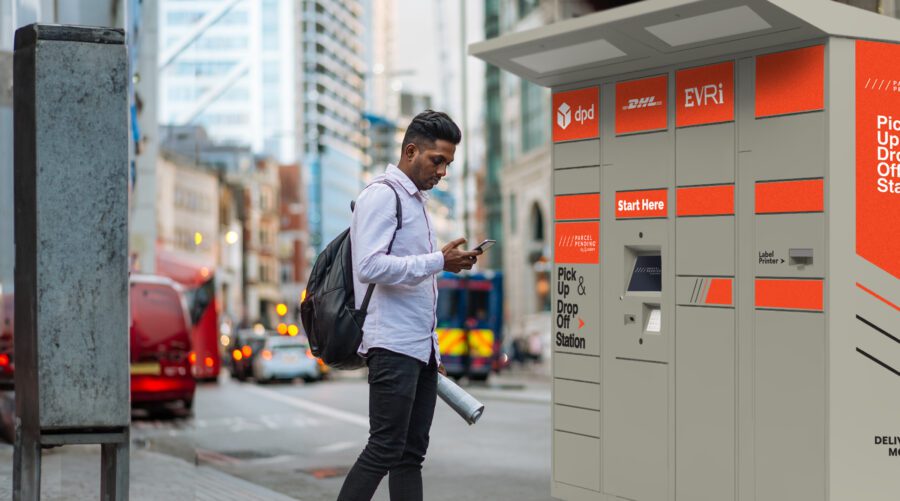
University
How Electronic Lockers Fix Student Internet Package Issues
Written by: Parcel Pending
7 Min Read
Published: April 11, 2020
Updated: April 3, 2023
As the final batch of Millennials leave universities and Gen Z goes to college, the question often arises—how will colleges change? Every generation brings its own set of issues and agenda. Some of the biggest protest movements happened on college campuses with the Baby Boomers in the 60s. Technology progressed from the Walkman to the iPhone X as Millennials went through college. Now, it’s time for Gen Zers to make their mark. And where are they being felt the most right now?
Shockingly, in campus mail service centers.
With 75% of Gen Zers preferring to shop online for the convenience it offers, all those packages that were once being delivered to homes across the country are now funneling toward universities. A solution to the student internet package crisis needs to be found. Are smart lockers for colleges the answer?
The Current Package Problem
It’s not just university mail services feeling the heat from this “parcel pandemonium”—everybody is feeling it.
Student Pain Points
Students are often trying to grab a care package between classes or waiting for their textbook that they need for a class that started two weeks ago. Unfortunately, it’s not uncommon for mail centers on campuses to be holding anywhere from 500 to 1,000 packages (especially during the holiday seasons). This means backlogged systems where staff may not even realize a student’s package has arrived.
In addition, once the package has been input into the system and the student has been notified, the long 15- to 30-minute queue times can create extra consternation.
Staff Pain Points
If this sounds frustrating from the student’s point of view, imagine how the mail center staff feel. Not only are they finding it increasingly difficult to keep up with the package deliveries, but when their (generally) small mail storage areas become filled, they’re forced to store extra packages offsite. This creates an unneeded clog that, when compiled with the students’ frustrations, can be overwhelming for the mail services staff member.
Unfortunately, it doesn’t stop there. Campus mail service centers are often run by hired students and staff who are employed to handle everything from package delivery to student complaints to resident events and more. By exhausting their time handling packages, the inefficiencies quickly spread.
University Pain Points
Any issue gone too far should create a point of investigation for the university or college. Whether it’s dining hall food complaints or not enough space to study within a library—seemingly small problems can have unforeseen adverse outcomes.
A question to keep in mind: is the university receiving complaints about mail service inefficiencies? Or is the university receiving complaints about package theft? One is a hassle; the other is a reportable offense that can increase the on-campus crime rate.
Is this all a result of the fact that Gen Zers are more inclined to shop online and, thus, receive more packages? The answer—like with many problems—is multifaceted.
The Rise of E-commerce
Over the last twenty years the idea of online shopping went from a credit card theft possibility to a synonym with driving to an outlet and purchasing an item. In fact, “online shopping” isn’t even used in the lexicon anymore—it’s really just “shopping.” This speaks volumes to the rise of e-commerce, which directly reflects in the global data. According to DigitalCommerce360:
- In 2016, online sales globally reached $2T (trillion)
- In 2017, online sales globally reached $2.4T
- In 2018, online sales globally reached $2.9T
- In 2019, online sales globally skyrocketed to reach $3.5T
Combine this fact with how younger populations are more willing to purchase an item online with a credit card and wait for shipping, than they are to drive to an outlet store and buy it—and suddenly the package crisis on campus seems a bit more understandable.
Of course, the increased packages aren’t a new problem.
E-commerce (and thus package delivery) has been rising steadily over the last ten years. There has been plenty of time to bolster mailrooms in universities to adapt to the changing e-commerce landscape. The question is—have the necessary changes been made?
The Traditional Mailroom Setup
Systematic structures are reluctant to change if it’s not immediately necessary. Steadily increasing package volume—creeping up around 8 to 15% per year—makes it hard to justify overhauling a system and instituting change. In many instances this could look like one or two extra packages per day on average.
Is one or two packages more per day really much to fuss about?
In the long haul, yes. Let’s take a look at the numbers for just one major courier USPS:
- In 2010, they shipped 3.1B packages
- In 2011, they shipped 3.3B packages
- In 2012, they shipped 3.5B packages
- In 2013, they shipped 3.7B packages
- In 2014, they shipped 4.0B packages
- In 2015, they shipped 4.5B packages
- In 2016, they shipped 5.2B packages
- In 2017, they shipped 5.7B packages
- In 2018, they shipped 6.2B packages
Taking any one of these years in isolation, the change goes as high as a 12.5% increase in packages between 2014 and 2015. But again, a 12.5% increase at a college mail services center may mean an extra 30 minutes to an hour of sorting and distributing per week. Between 2010 and 2018 the number of packages shipped doubled. Suddenly, what used to be one aspect of a job for mail services staff now eats up twice as much of their work time.
This also doesn’t take into account the inefficiencies that pile up due to one part of a job becoming more time demanding. Plus, physical space and physical storage become a real commodity that can “run out” should too many packages arrive at once.
It’s a cycle of inefficiency that colleges and universities need to consider when the thought arises: “is one or two more packages per day really much to fuss about?”
Enter: Electronic Parcel Management Systems
Otherwise known as “smart lockers”—electronic parcel management systems are technologies that solve the complex delivery issues that are facing universities. How do these smart lockers work?
Campus mail center staff deliver the parcel to the smart locker. . From the system, the student will receive a notification via text or email that their parcel has arrived. The student walks up to the locker system, scans their phone or inputs a pickup code, and the locker holding their package opens.
It’s smart. It’s orderly. It’s secure.
Parcel Pending Smart Lockers
As a direct solutions provider to colleges and universities, Parcel Pending has been optimizing the most cutting-edge software and hardware to solve the campus delivery crisis and return a sense of order to campus mail services. Because no two student bodies are alike, there are an incredible number of ways to customize the Parcel Pending locker setup to match each college’s needs. Some examples of these personalized factors include:
- Size and Number of Lockers – Mail services administrative staff understand the volume of packages that come in daily and what size the packages typically are. Colleges can decide how best to utilize the smart locker system using a variety of locker sizes and configurations.
- Customizable Color and Logo – Support the student body and promote schools by decking out the smart lockers with the school colors and mascot.
- Indoor and Outdoor Lockers – These lockers don’t need to stick to simply student mail centers. Setting these lockers up around campus allows college students to choose and access the locker that’s closest to them.
Additional Benefits of Smart Lockers
The benefits of including intelligent parcel locker systems in your package delivery system go beyond addressing the pain points of students, faculty, and the college. This automated solutions also offers:
- Smart Tech Initiatives – Campuses are increasingly competing for the most prestigious student body. One way in which they are attracting the best and brightest is by offering all the student housing amenities and things that college students want—including smart technologies.
- Added Security for Campus Safety – With security cameras and trackability, the smart lockers ensure that package theft is no longer an issue.
- Increased Productivity – Return peace of mind back to your student housing managers and auxiliary services staff, and allow them to return to their other work demands. With smart lockers you increase efficiency and productivity.
- Financial Savings – As the saying goes—time is money. In the case of the rising demand for a package delivery system by students, faculty and staff alike, this is one area where saving time saves money.
The Intelligent Solution
This problem isn’t going away any time soon. Apart from campuses, the overwhelming feeling of parcel pandemonium is being felt everywhere—businesses that allow their employees to accept packages at the main office; multifamily apartments without a modern package delivery system. And with e-commerce trending upward at a stellar pace globally, the need for an intelligent solution is clear.
With Parcel Pending lockers, colleges can relieve the pain points of their mailroom clerks, residence managers, and student body and create a healthy system of package exchange on campus.
For insights on trends in college student housing, check out our other articles on the Parcel Pending blog.
Sources:
- Best Degree Programs. 20 of the Most Important College Protests and Social Movements. https://www.bestdegreeprograms.org/features/college-protests-social-movements
- MarketingDive. Study: 80% of Gen Z like shopping in-store, but turn to e-commerce for convenience https://www.marketingdive.com/news/study-80-of-gen-z-like-shopping-in-store-but-turn-to-e-commerce-for-conv/524960/
- Digital Commerce 360. Global ecommerce sales to reach nearly $3.46 trillion in 2019. https://www.digitalcommerce360.com/article/global-ecommerce-sales/
- USPS. A decade of facts & figures. https://facts.usps.com/table-facts/



